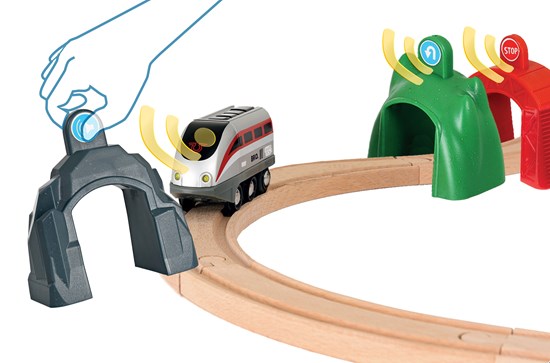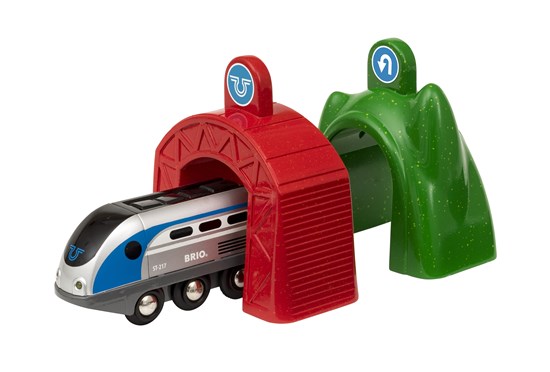BRIO has started rolling out it’s new Smart Tech railway products in Europe. You might remember the Smart Track products from the mid-2000’s, which used RFID chips embedded in A1 track and some accessories to control the actions of the Smart Track engine. You also got little plastic signs to help you remember which track was where. The system was expensive, the Smart Engine was temperamental, and the track was only available in those A1 straights, but by and large it worked.

In contrast, Smart Tech does away with the track and instead uses little plastic tunnels that go over the track. Like the old Smart Track, each tunnel has a specific action programmed into it which controls the engine. The actions haven’t changed much, though it’s still the first year of the product line (and there aren’t really that many actions for a train, anyway). The tunnels are obviously more flexible than the track since they can be placed anywhere without altering your layout, provided you have space on both sides.

Both Smart Tech engines released so far seem to be the same design (three pairs of wheels, with the last being the drive wheels), in two different color schemes. The 3-wheel design should address at least one common complaint with the older system: negotiating the sharper E1 curves without derailing.
Update: Smart Tech will come to the U.S. in June.
Will the new engine work with the rfid track? Have some of the rfid speed and caution track sections.
Highly unlikely. The old Smart Track embedded the RFID chips in the track.
RFID scanners have a very short range. The new track mounts the chips in the arch of the tunnel, which puts the scanner on top. While I haven’t purchased one of the Smart Tech engines yet, I’d be surprised if it could even find the Smart Track RFID chips, much less read them.
After disassembling a smart tech engine and investigating a few pieces of the system, I think the smart tech engines have two rfid readers in them. One is in the nose of the engine, at an angle under the wind screen. The other is in the undercarriage. This allows the train to read tags over and under the train. So there is at least a chance it will work!